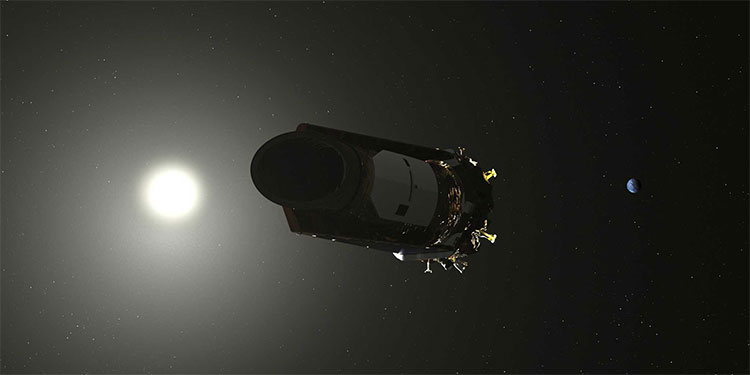Kepler Space Telescope
The Kepler telescope, NASA's powerful assistant, ceased operations after nine years of searching for extrasolar planets that could exist in space.
The US Aeronautics and Space Administration (NASA) has announced that the Kepler space telescope has run out of fuel and ended its mission in deep space 151 million kilometers from Earth, according to CNN. This is the result of the forecast because low fuel levels were recorded from July.
The 9-year planetary hunt, found 2,899 celestial bodies capable of extrasolar planets and 2,681 extrasolar planets confirmed in the Milky Way, revealing the Solar system is not the only star system. Kepler helps astronomers detect about 20 - 50% of stars in the night sky certainly accompanying small planet-sized planets in the habitable area. Liquid water can exist on the planet's surface, allowing life to form and grow.
The final instructions have been transmitted. Kepler will maintain a safe distance from the Earth to avoid colliding with the planet.

Kepler stopped operations 151 million kilometers from Earth.(Photo: NASA).
"As NASA's first planetary mission, Kepler has gone beyond all our expectations, paving the way for the discovery and search of life in the solar system and deeper space," Thomas said. Zurbuchen, who runs NASA's Science Mission Directorate in Washington, said.
"Kepler not only shows us how many planets can exist out there, it also sparked an entirely new field of research in the scientific community. Kepler's findings help us understand. His position in the universe and sheds light on many mysteries about the stars, " Mr. Zurbuchen shared.
Kepler's mission was named in honor of the 17th-century German astronomer, Johannes Kepler, who discovered the law of celestial motion. The Kepler telescope not only fulfilled its original goal but also brought unexpected opportunities to answer many questions about our galaxy and the universe, according to Charlie Sobeck, project systems engineer in China. NASA Ames research center.
Every scientific data bit collected by Kepler is transmitted to scientists on Earth. After launching in 2009, Kepler focused on observing the same spot in the sky for 4 years. Data reveal the plentiful and plentiful planets, especially small rocky planets similar to the Earth in the area that can live around the host quite popular, according to Jessie Dotson, scientist in Kepler project. at NASA Ames Research Center.
When the four-year mission ended, the main targets were completed, but mechanical problems caused Kepler to stop suddenly. The engineers restarted the mission, trying to get Kepler to survey new airspace every few months. The new mission is called K2, focusing on bright and near stars. K2 also lasts 4 years as the first mission, allowing Kepler to survey a total of more than 500,000 stars.
Kepler's discovery also helped shape future missions. , launched in April, is NASA's latest planetary hunting tool. TESS began scientific activities at the end of July and is looking for planets orbiting 200,000 brightest stars near Earth.
- Kepler Space Telescope is about to stop working
- Video: Kepler's space telescope is about to run out of fuel
- NASA planetarium expert broken
- Kepler's largest telescope in the world has a serious problem
- The Kepler space telescope returned to operation
- Discovering a small planet like Earth
- The Kepler spacecraft finds a new 'super-earth'
- Discover the first 4 peripheral planets in 2012
- NASA's 'powerful arm' alien hunting disappeared mysteriously
- Kepler telescope officially retired at 151 million km from Earth
- Discovered 41 new planets
- Astronomers confused because of the giant version of the earth
 Norway built the world's tallest wooden tower
Norway built the world's tallest wooden tower Kremlin
Kremlin Ashurbanipal: The oldest royal library in the world
Ashurbanipal: The oldest royal library in the world Decoding the thousand-year construction of Qin Shihuang shocked the world
Decoding the thousand-year construction of Qin Shihuang shocked the world